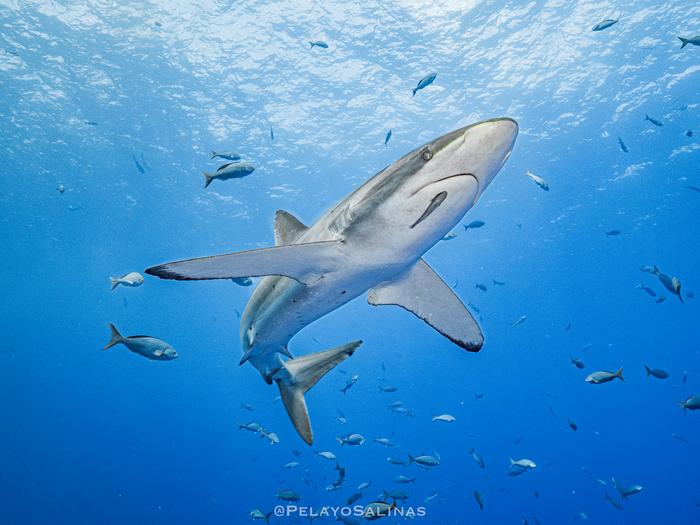In a study that has uncovered the most extensive migration ever recorded for a silky shark, researchers from the Charles Darwin Foundation, Guy Harvey Research Institute, Save Our Seas Foundation Shark Research Center, and Galapagos National Park Directorate have shed light on the critical need for international cooperation in protecting these vulnerable creatures.
Genie’s Remarkable Odyssey
The star of this study, an adult female silky shark affectionately named ‘Genie’ after the late shark ecologist Dr. Eugenie Clark, embarked on a monumental journey that spanned 546 days and covered an astonishing 27,666 kilometers. Tagged near Wolf Island in the Galapagos Marine Reserve in July 2021, Genie’s voyage took her far beyond national boundaries, venturing into international waters where fishing pressures are high and regulations are minimal.
Dr. Pelayo Salinas de León, the study’s lead author, emphasized the importance of understanding the migratory pathways of silky sharks and other threatened pelagic species. “Sharks have been roaming the world’s oceans for hundreds of millions of years and the map boundaries we humans have established on paper mean nothing to them,” he said. “Their long migrations through heavily fished international waters expose them to significant risks, highlighting the need for a coordinated global response to ensure the survival of this highly threatened group of species.”
Silky Sharks: Vulnerable and Valuable
Silky sharks, classified as Vulnerable on the IUCN Red List of Threatened Species, are particularly susceptible to overfishing due to their slow growth, late maturity, and the high demand for their fins in the global shark fin trade. They are among the most frequently caught sharks in both artisanal and industrial fisheries, making them a conservation priority for organizations like the Charles Darwin Foundation.
Co-author Dr. Mahmood Shivji of the SOSF-SRC and GHRI stressed the significance of Genie’s tracking data, which revealed unexpectedly consistent and repeated travel pathways far offshore, well beyond national management and current marine protected areas. “This finding is a call to action for all stakeholders involved in marine conservation and fisheries management to work together to protect these iconic species and the oceanic ecosystems they inhabit,” he said.
The study, published in the Journal of Fish Biology and freely accessible, serves as a vital reminder of the interconnectedness of our global marine environments and the collective action required to safeguard ocean biodiversity. The research was made possible through the generous support of the Save Our Seas Foundation, the Darwin and Wolf Conservation Fund, the Mark and Rachel Rohr Foundation, the Shark Foundation, and the Guy Harvey Foundation.


